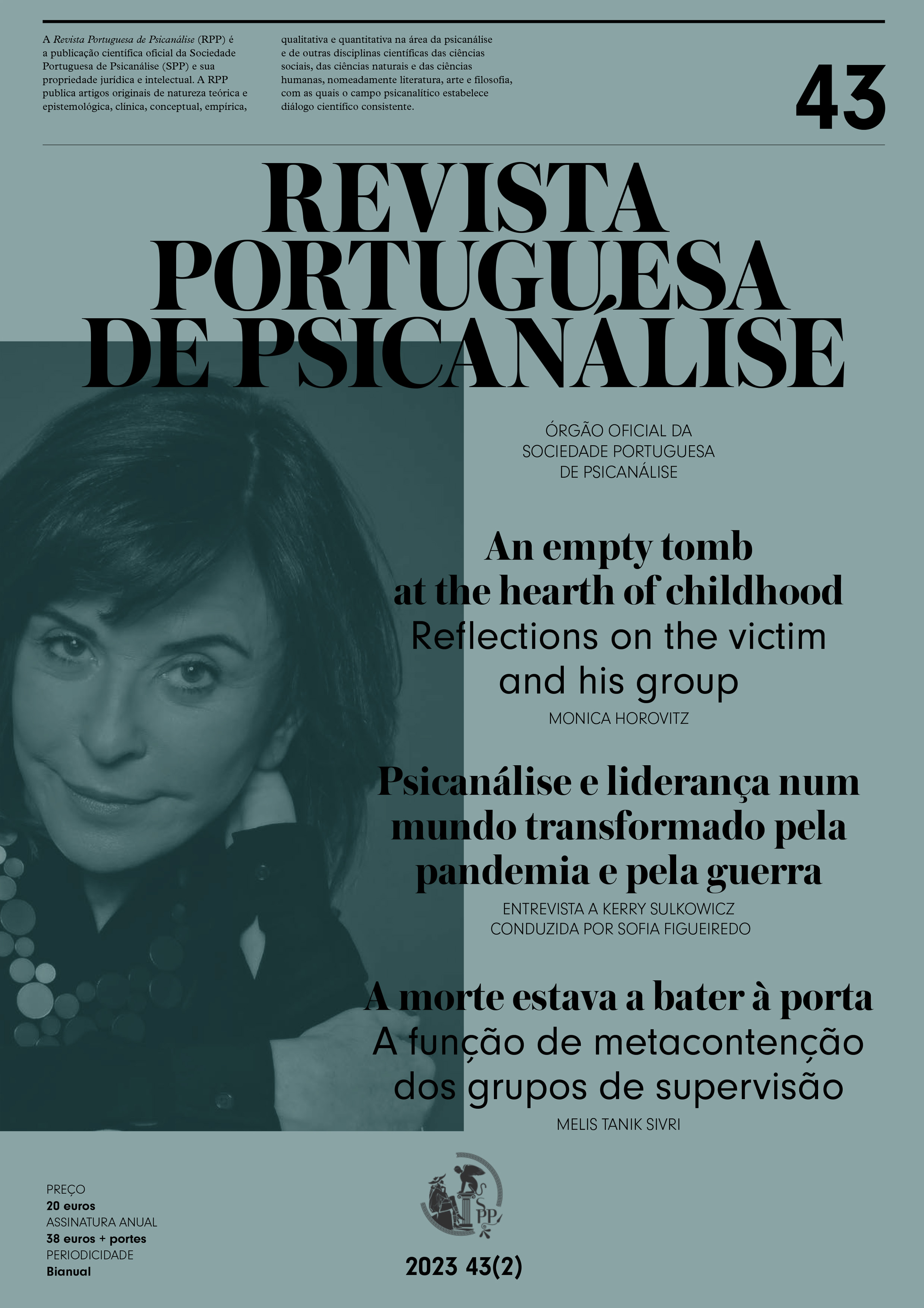A morte estava a bater à porta: A função meta-contentora do grupo de supervisão

Resumo
A destruição e a violência que aumentam no mundo trazem novas questões sobre a teoria e a técnica no campo da psicanálise. O objetivo deste artigo é discutir a importância da função de meta-contenção dos grupos de supervisão com psicoterapeutas que trabalham com vítimas de trauma. De modo a ilustrar este processo, são dados exemplos de um grupo de supervisão voluntário que se estabeleceu na sequência de uma série de ataques terroristas na Turquia. Eventos traumáticos, ocorridos no mundo externo e testemunhados nas sessões, podem criar obstáculos à capacidade de contenção do terapeuta, o que torna impossível pensar “debaixo de fogo” quando a morte bate à porta. Elaborando os sentimentos contraditórios da vítima de trauma e os mecanismos de identificação projetiva do grupo, um conhecimento mais aprofundado do paciente é alcançado e os pontos cegos do terapeuta são revelados. Se a díade terapeuta-vítima de trauma conseguir mover-se da ação para a simbolização, o processo terapêutico enriquece-se, o trabalho de luto é ativado, e em alguns casos os sintomas desaparecem e uma melhor adaptação ao mundo externo pode emergir.
Palavras-chave
continente-conteúdo, função meta-contentora, rêverie, supervisão, trauma
Biografia Autor
Melis Tanik Sivri
Psicanalista didata da Psike Istanbul e Membro europeu da Cowap. É também Editora-Chefe dos livros anuais do The International Journal of Psychoanalysis.
Referências
- Bergstein, A. (2013). Transcending the caesura. The International Journal of Psychoanalysis, 94, 621–644.
- Bion,W. (1957). On arrogance. The International Journal of Psychoanalysis, 39, 144–146.
- Bion,W. (1959). Attacks on linking. The International Journal of Psychoanalysis, 40, 308–315.
- Bion, W. (1961a). Experiences in Groups and Other Papers. Tavistock.
- Bion, W. (1962a). The psychoanalytic study of thinking. The International Journal of Psychoanalysis, 43, 306–310.
- Bion,W. (1962b) Learning from Experience. Karnac Books.
- Bion, W. (1967). A theory of thinking. In Second Thoughts (pp.178–186). Heinemann. (Original publicado em 1961).
- Bion, W. (1997). War Memoires 1917-1919. Karnac Books.
- Brown, L. (2012). Bion’s discovery of alpha
- function:Thinking under fire on the battlefield and in the consulting room. The International Journal of Psychoanalysis, 93, 1191–1214.
- Freud, S. (1920). Beyond the pleasure principle. Em The Standard Edition of the Complete PsychologicalWorks of Sigmund Freud, vol. 18 (pp. 3–64). Hogarth Press.
- Guignard, F. (2002). A stroll through the preconscious. Consultado em 17 de julho de 2023, em http://www.ercankesal.com/sevdigim-yazilar/bilinconcesinde-bir-gezinti/
- Joannidis, C. (2000). Sharing the unconscious phantasy:The therapist’s emotional reaction to the group as-a-whole. Group Analysis, 33 (2), pp. 209–220.
- Klein, M. (1940). Mourning and its relation to manic-depressive states. The International Journal of Psychoanalysis, 21, 125–153.
- Leuzinger-Bohleber, M., Rickmeyer, C., Tahiri, M., Hettich, N. & Fischmann,T. (2016).What can psychoanalysis contribute to the current refugee crisis? Preliminary reports from STEP-BY-STEP: A psychoanalytic pilot project for supporting refugees in a “first reception camp” and crisis interventions with traumatized refugees. The International Journal of Psychoanalysis, 97, 1077–1093.
- Roper, M. (2012). Beyond containing: World War I and the psychoanalytic theories of Wilfred Bion. Em S. Alexander & B.Taylor (Eds.), History and psyche – Culture, psychoanalysis, and the past (pp.129–147). Palgrave Macmillan.
- Souter, K. M. (2009). The War Memoirs: Some origins of the thought of W. R. Bion. The International Journal of Psychoanalysis, 90, 795–808.
- Segal, H. (1952). A psycho-analytical approach to aesthetics. The International Journal of Psychoanalysis, 33, 196–207.
- Szykierski, D. (2010). The traumatic roots of containment:The evolution of Bion’s metapsychology. The Psychoanalytic Quarterly, 79, 935–968.
- Winnicott, D. W. (1951). Transitional objects and transitional phenomena. A study of the first not-me possession. The International Journal of Psychoanalysis, 34, 89–97.
- Triest, J. (2016). Individual and Collective Dimensions of Trauma: When the (Unconscious) Nightmare Becomes Reality. Conferência proferida em Istambul. Novembro de 2016.